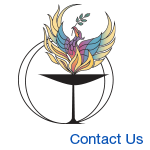
Practicing mindfulness with a community of friends.
Currently on Zoom Saturday mornings,
9:30 – 10:30 MST.
Zoom ID: 486 920 2119 | Passcode: Sammy
We invite you to practice being in the present moment with other community members.
Our true home is the present moment.
The miracle is not to walk on water.
The miracle is to walk on the green earth in the present moment.
-Thich Nhat Hanh
What is Buddhism?
Buddhism is not a conventional religion, in that there is nothing to take on faith, and there is no supreme being to worship. Rather, it is a path of living with mindfulness and compassion. Siddhartha Gautama, later called Buddha (meaning the Enlightened or Awakened One), born in India in 560 B.C., taught this path.
Since then, several kinds of Buddhist practice have flourished, including Zen, Tibetan and Theravadan/Vipassana. All teach a path anyone can follow to help lessen their suffering. The basis is “the four noble truths,” which simply say: Life is difficult because we want things we don’t have or want to avoid things we do have; by being more present, we can see this clearly and learn to let go, following the “eightfold path” of ethical behavior that leads toward greater contentment.
In the U.S., the current mindfulness movement, started by Jon Kabat-Zinn in 1979 at the University of Massachusetts, is based on these Buddhist principles translated into language of our present day.
We invite you to join us as we practice being in the present moment with other community members Saturday mornings from 9:30 – 1030 MST: Zoom ID: 486 920 2119 | Passcode: Sammy.
For more information, contact sangha@phoenixuu.org.
Be in the present moment
Mindfulness practice helps people relax, focus and breathe, which calms the mind and body.
Mindfulness Based Stress Reduction (MBSR) training, based on principles of Buddhist psychology, has been studied scientifically and found to improve physical symptoms (such as chronic pain, high blood pressure, shortness of breath and insomnia) and to decrease emotional and psychological distress (such as anxiety and depression).
Brain MRIs before and after an eight-week course show growth of temporal lobe areas (memory, emotional stability) and shrinkage of the amygdala (anxiety, anger, fear).




